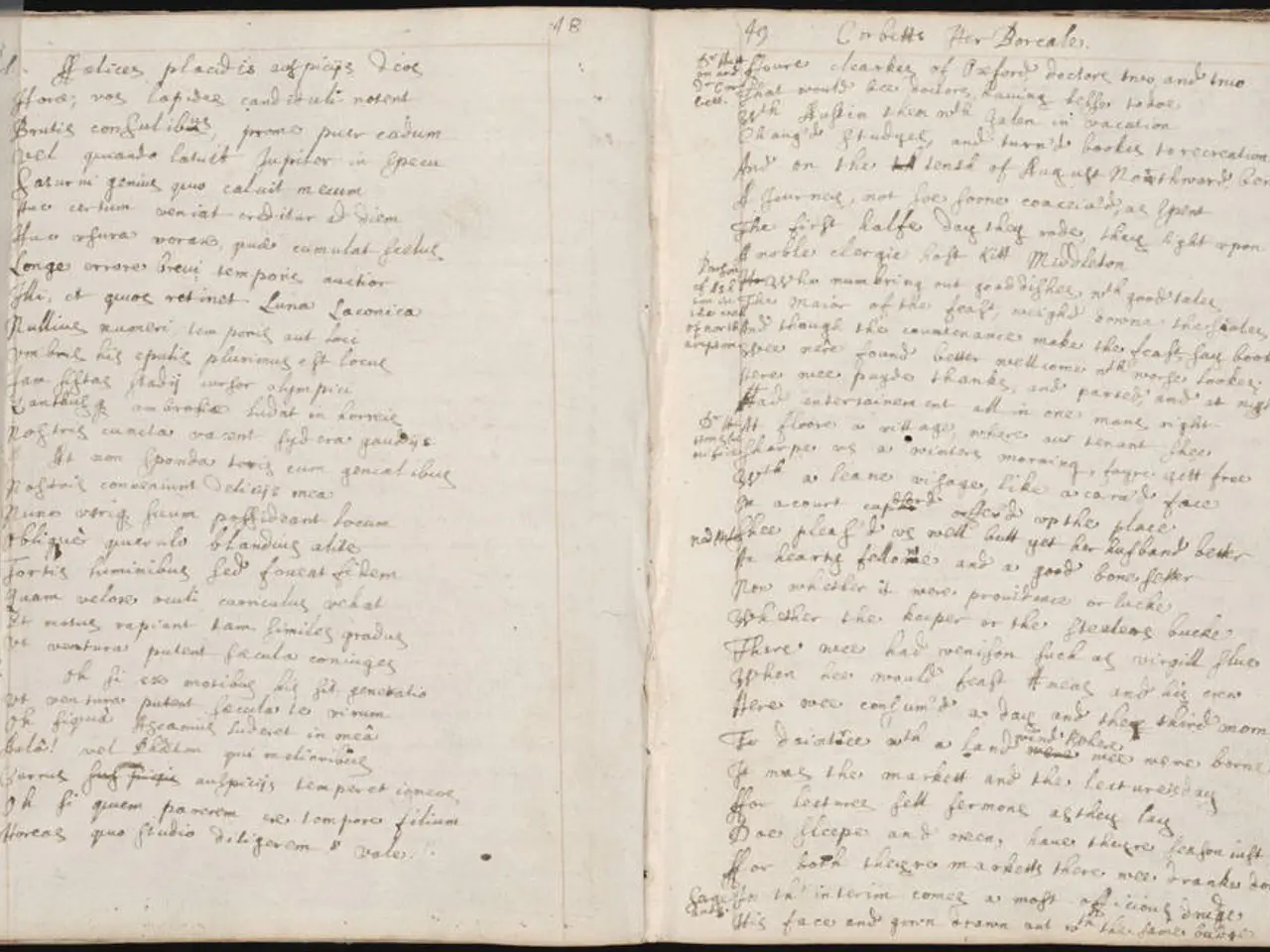Historical trends and specific values of gold prices from 1915 to 2025
In the tumultuous world of finance, gold has long been a safe haven for investors seeking stability. Over the past century, gold prices have seen significant fluctuations, with periods of dramatic surges and prolonged bear markets.
The 1970s marked a turning point for gold, as prices surged dramatically, rising from about $35 per ounce at the start of the decade to over $600 by early 1980. This phenomenal gain was driven by inflation, oil crises, and monetary instability. In contrast, the 1980s and 1990s were largely negative for gold investors, with gold prices declining significantly from their 1980 peak and delivering negative real returns in those decades.
Comparatively, the S&P 500 experienced strong performance in the 1980s and 1990s, fueled by economic growth and equity booms. According to historical data, every major gold bear market from 1980 onwards occurred during times of strong S&P 500 performance, reflecting gold’s counter-cyclical nature relative to stocks.
To summarize by decade:
| Decade | Gold Price Performance | S&P 500 Performance | Notes | |---------|-------------------------------------|-------------------------------|---------------------------------------------------| | 1970s | + Over 1500% increase (~$35 to $600)| Moderate stock gains | Driven by inflation, oil shocks, monetary crises | | 1980s | Significant decline (bear market) | Strong gains | Volcker Fed interest hikes controlled inflation; gold bear market 1980-1985 | | 1990s | Continued weakness, negative returns | Very strong gains | Tech boom for equities; gold under pressure |
Thus, gold notably outperformed stocks during the inflationary 1970s but underperformed during the bigger stock bull markets of the 1980s and 1990s, when gold prices experienced long bear markets while the S&P 500 soared.
The early 2000s were affected by the hangover of the dot-com bubble, leading to a decline in stock prices and companies' shares. However, the 2000s marked a significant rise in gold prices after two decades of stagnation. Gold's price started to boom after President Nixon ended the dollar's convertibility in 1971, and the U.S. left the gold standard in April 1933, and re-established a limited form of the standard in the 1940s.
More recently, gold prices remained high from 2010 to 2012, but receded for years and didn't reach previous highs until mid-2020. During this period, gold traded between $1,750 and $2,000 for most of late 2020 through 2022, despite the Fed raising interest rates to combat inflation. The COVID-19 pandemic also affected gold prices, with asset prices zooming higher in 2020 and 2021, including the price of gold.
Gold has a tendency to rise when investors anticipate economic hardship or crisis. Its performance can outperform key benchmarks like the Standard & Poor's 500 stock index during periods of economic stress. Continued concerns over spiraling U.S. government debt and economic stresses may keep gold topmost in traders' minds as they consider safe investments.
However, it is essential for investors to conduct their own independent research into investment strategies before making an investment decision. Gold, like any investment, carries its own risks and rewards, and understanding these factors is crucial for making informed decisions.
Expanding one's knowledge about investment strategies, including the role of gold, can be essential for self-development in finance. Gold, which notably underperformed stocks during the 1980s and 1990s' bull markets and outperformed them during the inflationary 1970s, has a tendency to rise in response to economic hardship or crisis, making it a potential safe haven for investors seeking stability.




